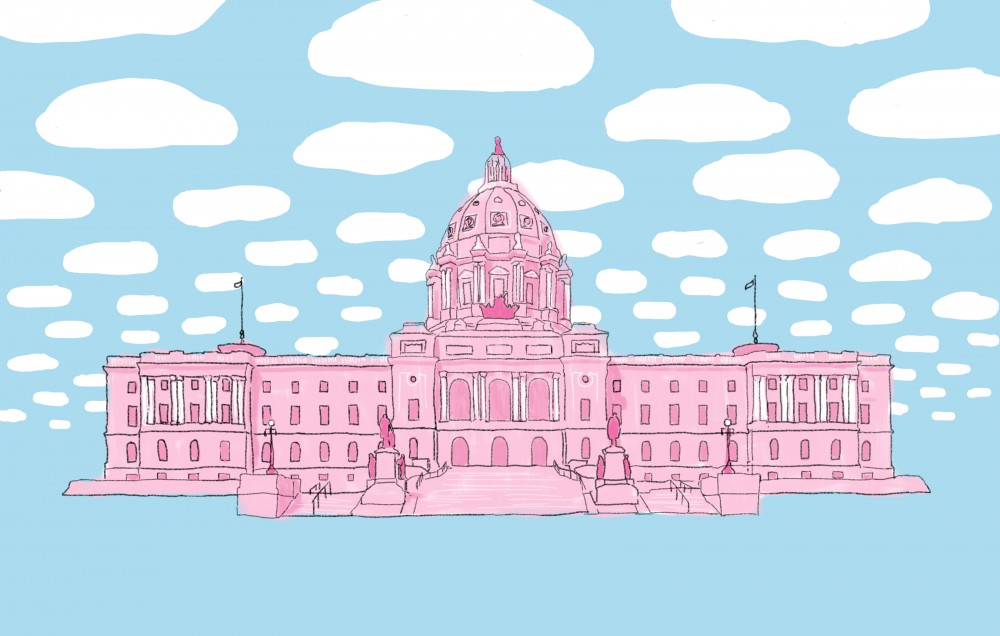The state legislature released many of their omnibus bills within the last month to determine how to use the state’s projected $9.25 billion surplus; but what are omnibus bills and how exactly do they work?
Omnibus bills are an important tool for legislators to use, but not everyone understands exactly what they are. The Minnesota Daily talked to three experts to help students understand.
What are omnibus bills and why do legislators use them?
Omnibus bills are a way for legislators to combine smaller bills into a large cohesive bill in order to pass them all at once, according to the Minnesota Legislative Reference Library. They are common for budgetary items.
There is usually one omnibus bill per committee in both chambers of the legislature. For example, the House and Senate Higher Education Committees have their own omnibus bills they introduce by the middle of each session.
Omnibus bills can include either policy or budget initiatives, depending on the year. Typically, the legislature passes their main funding items every odd-year and then focuses on policy each even-year. This year, the state is projected to receive a large surplus, meaning these bills focus on both policy and supplemental funding.
Legislators also use these bills because it takes less time on the floor by not voting on each item. Smaller pieces of legislation, like a proposed clean water plan and amendments to the regent selection process, were included in the House Higher Education omnibus bill to save voting time on the House floor.
The Higher Education omnibus bills in both chambers were released by mid-April and included anywhere from $2.5 million to $32.5 million, depending on the chamber. Both bills included funding for the Natural Resources Research Institute and various funding for public safety programs; the House version was the more generous of the two and included money for scholarship initiatives and other sustainability initiatives.
“[Omnibus bills] can be more efficient, because rather than having to track and pass multiple different bills, you can put everything together in an overall package and move forward with it that way,” said Nathan Hopkins, a non-partisan legislative analyst with the House Research Department.
Omnibus bills also help to keep all budget items in the same place.
“By grouping all the spending together in a single bill, it is easier for the committee to see how much that committee is spending and allocating money among various projects or proposals,” Hopkins said.
What is next for these bills now that they’ve passed their first committee?
Once omnibus bills pass their initial committee, most of them go to different committees to be evaluated by different legislators. After making it to their chambers’ floor for a vote, the legislature will likely appoint a conference committee to resolve the differences between the two bills.
“In order for a bill to become law, the House and the Senate have to pass a bill that’s exactly the same. [A conference committee will] try to hammer out the differences between the two bills, because the bills have to be identical,” said Dr. Michael Minta, a professor of political science at the University of Minnesota.
Once the differences are resolved in the conference committee, the final version of the bill is referred to Gov. Tim Walz, who will either sign or veto the bills.
How can students be involved in the process?
While most of the first hearings for bills are over, there are still many ways students can get involved to express their opinions about funding or policies in omnibus bills.
“They can reach out to their elected representatives,” Hopkins said. “Whether they’re a Minnesotan or they’re still voting back at home, reach out to their elected representative to express their views about whatever issues are of interest to them.”
Brandon Price, a state senate intern who started at the University in January, also pointed out how that the legislature is open to the public.
“One thing that a lot of people don’t know is that the Minnesota legislature is very public-oriented,” Price said. “You can go online and watch these committee hearings live on YouTube. Nothing’s closed off. You can go into the Capitol and go into the gallery and just watch things happen.”













